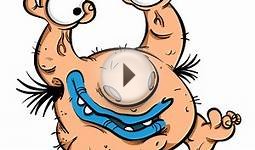Monsters are real
They just look a little different in the light of day.
“HIC SUNT DRACONES.”This phrase translates from the Latin as “here are dragons.” It is etched on the eastern coast of Asia on one of the oldest terrestrial globe maps, the Lenox Globe, dating to 1510.
Though the phrase itself is found on only one other historical artifact, a 1504 globe crafted on an ostrich egg, the depiction of monsters and mythological beasts are common on early maps. They crop up most commonly in the unexplored reaches of the oceans, warning would-be explorers of the perils of these unknown territories.
One of the most famous of these maps is Olaus Magnus’, drawn in 1527-39. A detailed map of Scandinavia-one of the oldest ever created-it depicts the Norwegian Sea as so teaming with monsters that it would seem impossible to escape these waters uneaten.Magnus (1490-1557) was the Catholic archbishop of Sweden and a prominent historian. His travels brought him farther north than any of his contemporary European intellectuals, lending a great deal of perceived credibility to his accounts and publications. In 1555, Magnus published (“A Description of the Northern Peoples”), which not only related the history, customs, and beliefs of the Scandinavian people, but also reprinted and described the creatures found on Carta Marina. His standing and reputation secured the widespread acceptance of his stories.
Olaus’ descriptions and drawings were copied repeatedly, with little to no modification, for centuries by such historical titans as Conrad Gessner (whose, replete with Magnus’ drawings, is the first modern zoological work attempting to describe all known animals), Edward Topsell, Ulisse Aldrovandi, and John Jonstonus. Such repurposing ensured that these creatures were ingrained in the public mind as truth. And over the centuries, many new monsters were added to the mix as well.Creating Myth from Reality
Where did the accounts of monsters come from in the first place? Were they simply fairytales invented to scare curious minds and small children?Henry Lee, who wrote extensively on sea creatures and monsters, emphasized that many classical monsters are not simply pure myth. In his publication (1883), he wrote, “…the descriptions by ancient writers of so-called ‘fabulous creatures’ are rather distorted portraits than invented falsehoods, and there is hardly any of the monsters of old which has not its prototype in Nature at the present day.”
How did these “distorted portraits” come about? By the 1500s, extensive oceanic exploration was still limited, and the fauna that called these places home remained virtually unknown. Publications by Magnus and those who copied him represented some of the first attempts to systematically aggregate and describe these animals. More often than not, their information came not from first-hand observations, but from sailors’ accounts of mysterious encounters while at sea. Less often, the decomposing remains of a washed-up carcass also fueled confidence in the existence of these terrible beasts.Sailors, or those unlucky beachgoers who had the misfortune to stumble upon a rotting basking shark, had no experience with such creatures. So, they explained them with what they did have experience with – myths and legends. If they enlivened their accounts with some embellishments, that simply made for a better story. And so, an oarfish became a 200 foot long sea serpent. A giant squid became a blood-thirsty kraken. A manatee became a mermaid. Olaus and others like him gobbled up the stories and published them alongside authentic species. The more the stories were circulated and published, the more likely people were to mistake what they did see for a monster. And the cycle continued.
The atmosphere of the day also fed people’s willingness to believe such tales. The 1500s were rampant with superstition. The Scientific Revolution would not start to make headway until later in the seventeenth century. There was no division between magic and reality – the two simply coincided. Thus, there was no reason that mythical beasts could not be real. And even when scientists began to embrace the scientific method, they still struggled to reconcile previous beliefs in the supernatural with science. It would take hundreds of years of dedicated scientific study and exploration to overturn classical and common opinion. In the case of some creatures (i.e. sea serpents), sightings and questions of authenticity still remain.Are Monsters Real?
So what’s the moral of the story? The animals that inspired such hair-raising tales as the sea serpent, leviathans, and hydra, and authenticated stories of mermaids and the kraken, are real. They just received some creative embellishments (and sometimes blatant artistic fraudulence) along the way. And in a world just beginning to turn away from superstition, but still inclined to embrace elements of mysticism, it’s not surprising that the tales were accepted. Besides, who doesn’t love a good monster story?бэтбум
You might also like



|
Smithsonian Smithsonian Micro Prehistoric Sea Monsters Toy (NSI)
|





